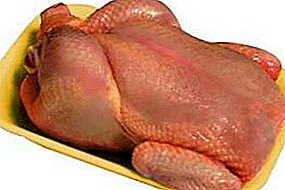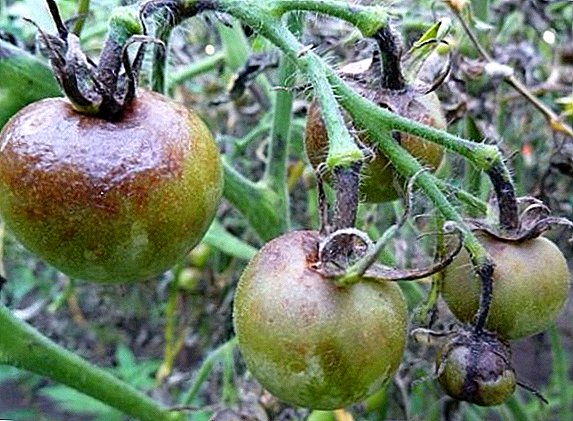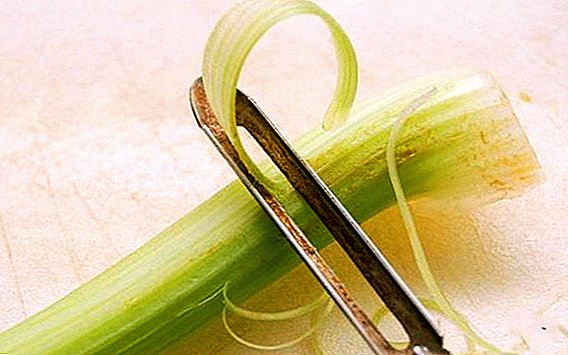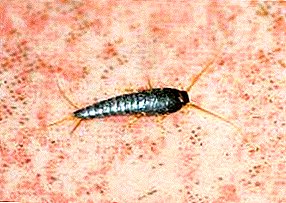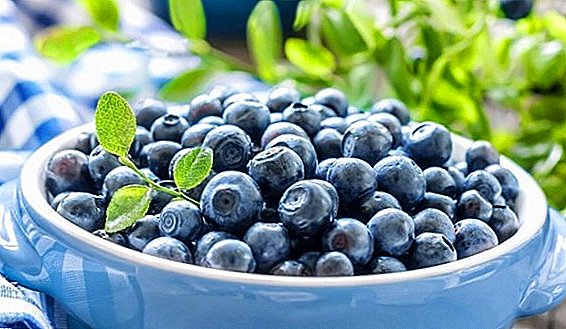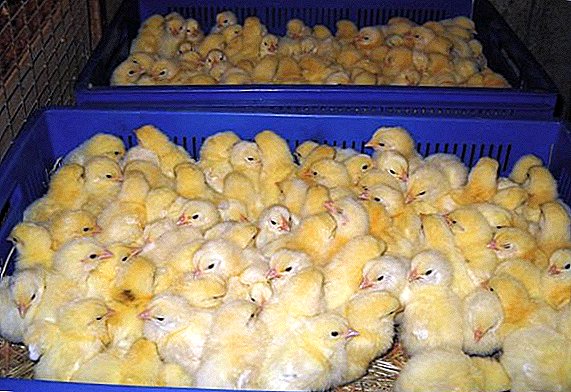
Avitaminosis D veterinarians call a lack of the vitamin of the same name in the body of poultry.
The fact is that this vitamin takes an active part in many processes occurring in the body of the bird, so its deficiency immediately affects its condition.
What is vitamin D deficiency in chickens?
Avitaminosis D is manifested in the case of the complete absence or obvious lack of vitamin D in the chicken ration. It is known for certain that this vitamin is involved in many physiological processes occurring in the body of the young. That is why its lack of a negative impact on the general condition of chickens and young chickens.
This vitamin plays an important role in mineral metabolism.. Relatively recently, it was found that it can facilitate the penetration of calcium salts through the intestinal wall through the formation of a special protein.
It is worth noting that the synthesis of this protein depends largely on vitamin D. It is for this reason that vitamin D is found in those places where there is an active exchange of salts.
Degree of danger
 The role of vitamins has recently been established by scientists involved in the study of poultry.
The role of vitamins has recently been established by scientists involved in the study of poultry.
Only now it is possible to say with certainty for which processes vitamin D is responsible.
Unfortunately, this type of beriberi is not immediately apparent, but after a whiletherefore, even a poultry farmer with extensive experience will not be able to understand what his livestock suffers from.
Experts have found that a lack of vitamin D is not immediately noticeable, but a few weeks after malnutrition.
All this time, he should receive inferior feed mixes so that all chickens feel a lack of this important vitamin. However, chickens suffering from avitaminosis D at an early stage never die right away, which is good for the breeder.
He gets enough time to save all the chickens. More dangerous diseases are infectious diseases that can almost immediately kill all the birds on the farm.
 Appearance of chickens Small neck attracts not all people. Find out what this breed is so popular for.
Appearance of chickens Small neck attracts not all people. Find out what this breed is so popular for.The effects of beriberi C in chickens are different from beriberi D. You can learn about the differences from here.
In order for chickens to die or begin to suffer badly, vitamin D deficiency must turn into a complex form, such as rickets. This disease is difficult to cure, so these chicks are most often killed, but this can be avoided by monitoring their condition in time.
The reasons
 Avitaminosis D develops in the body of poultry due to a lack of this vitamin.
Avitaminosis D develops in the body of poultry due to a lack of this vitamin.
As a rule, the cause of any avitaminosis is systematic malnutrition of an adult or young bird..
Avitaminosis D is usually manifested in those individuals that eat food with an insufficient amount or complete absence of this useful chemical.
Another possible reason for the lack of vitamin D in the chicken can be called low light in the house and rare walking. This vitamin begins to be actively produced under the action of ultraviolet, so birds, which are rarely in the open air, often develop vitamin A deficiency.
For the same reasons, it happens in chickens who constantly live in open-air cages with insufficient lighting. In this situation, the synthesis of vitamin D slows down or stops completely, which immediately affects the state of poultry.
In addition, vitamin D deficiency can occur in chickens due to any diseases of the digestive system. In this case, vitamin D is synthesized in poultry, but absorption in the small intestine does not occur, so even proper nutrition and fortified supplements will not be able to be cured until the disease of the small intestine and its other departments is treated.
Course and symptoms
 With a noticeable lack and complete absence of vitamin D in the body of a chicken, the processes associated with the absorption of phosphorus salts from the small intestine into the blood are immediately disrupted.
With a noticeable lack and complete absence of vitamin D in the body of a chicken, the processes associated with the absorption of phosphorus salts from the small intestine into the blood are immediately disrupted.
Gradually, the concentration of these salts decreases, which causes a delay in the development of young animals. As a rule, it is characterized by softening of the bone tissue.
The body of a young bird is trying to compensate for the lack of vitamin. For that he increases the activity of the parathyroid glands and adrenal glandsthat speeds up the extraction of calcium salts from the bones of the chicken.
At the same time, the pituitary gland and the thyroid gland begin to work slowly, which subsequently leads to abnormal bone development in chickens.
They are deformed and softened, the epiphyses become thicker, the ligaments do not withstand the load and tear, deforming the joints. Especially hard rickets of young stockings goes along with a deficiency of phosphoric and calcium salts in the resulting nutrition.
A 10-15 day old chickens with vitamin D deficiency have a sharp loss of appetite and weakness. Young animals do not have the strength to monitor their plumage, so it becomes dirty and disheveled, sometimes its loss can be observed.
After 2-3 weeks of avitaminosis in young birds, the level of physical activity decreases, as coordination of movements begins to suffer, and chickens cannot move normally.
Next to the cloaca, feathers turn dark due to persistent diarrhea. As for the bones of the bird, beak and claws, they become soft and easily change shape even under slight pressure.
 Rural grandmothers still love the Yerevan breed of chickens. After all, they are not whimsical to the conditions of detention, and are able to carry well!
Rural grandmothers still love the Yerevan breed of chickens. After all, they are not whimsical to the conditions of detention, and are able to carry well!To find out how much to cook the corn in the pan, go here: //selo.guru/ovoshhevodstvo/ovoshhnye-sovety/ckolko-vremeni-varit-kukuruzu.html.
The chick's upper and lower jaws become softened, may become elastic, like rubber. Just before death, young animals experience osteomalacia - complete immobility. Chickens lie down in an open-air cage, stretch their limbs and die like that.
In broiler chickens, these symptoms appear much faster, at about 10 days of age. They can be observed complete apathy, poor state of feathers, as well as walking on the heel joints. Broilers stop gaining weight, so they lag behind healthy chickens by about 50%.
Laying hens suffering from avitaminosis D begin to lay eggs that have a soft shell. Gradually, egg-laying stops completely, since chickens cannot sit normally. As a rule, they are capable of taking the penguin posture. All the bones of an adult hen begin to deform and soften, distorting the bird’s posture. There is a delay in growth and the number of eggs laid.
Diagnostics
 The diagnosis of avitaminosis D is made on the basis of the overall clinical picture, the autopsy data of the fallen birds, as well as the analysis of the food that the birds ate before death.
The diagnosis of avitaminosis D is made on the basis of the overall clinical picture, the autopsy data of the fallen birds, as well as the analysis of the food that the birds ate before death.
This takes into account the quality of their content, the degree of illumination, the number of hours of walking.
To pinpoint that the bird is suffering from vitamin D deficiency, Experts take on the analysis of the yolk of eggs from layers and blood.
In laboratory conditions, the biological material is analyzed for the content of phosphorus, calcium, their salts and citric acid. Normal concentration of salts in the body of poultry should be from 5.0 to 6.0 mg%.
Treatment
 During free-range, chickens ’need for vitamin D is completely covered by its synthesis from provitamins, which come with green fodder under the action of sunlight.
During free-range, chickens ’need for vitamin D is completely covered by its synthesis from provitamins, which come with green fodder under the action of sunlight.
That is why during the treatment of avitaminosis birds it is necessary to give a greater amount of green fodder, and also to provide timely walking in good weather.
You also need to take into account the fact that at different times of the year, birds in different ways need vitamin D. In the northern regions, chickens must receive vitamin D in the form of capsules, feed additives, as well as injections. During treatment, the bird should receive even more of this vitamin..
At the same time, sick young birds should be given fish oil and vitamin D in doses exceeding prophylactic 2 or 3 times. It is most effective to inject vitamins through injections, since they are thus absorbed more quickly in the body of an infected chicken.
Prevention
 On average, chickens need 0.05–1 mcg of vitamin D, and adult chickens need 2–4 mcg.
On average, chickens need 0.05–1 mcg of vitamin D, and adult chickens need 2–4 mcg.
For the prevention of rickets in young animals and avitaminosis in adult chickens, farmers give fish oil and concentrates of vitamins D2 and D3. Fish fat It is most convenient to give the birds along with flour feed at the rate of 1 g per head per day. Chickens should be given 0.5 g of vitamins per 100 g of feed.
Another way to prevent avitaminosis D is ultraviolet radiation of adult birds. This allows you to increase its egg production. The same method is used on young chickens.
It is possible to irradiate chickens from 10 days old for 3 minutes per day. The prophylactic course lasts about 10-14 days, after which you must take a mandatory break for 10 days. This will help the bird's body to better absorb the synthesized vitamin.
Conclusion
Avitaminosis D is an unpleasant disease that can cause the death of young chickens. To avoid it, it is enough to properly feed the young and to resort to preventive measures, if the bird rarely happens in the sun. All this will help keep the livestock of chickens on the farm safe and sound.



